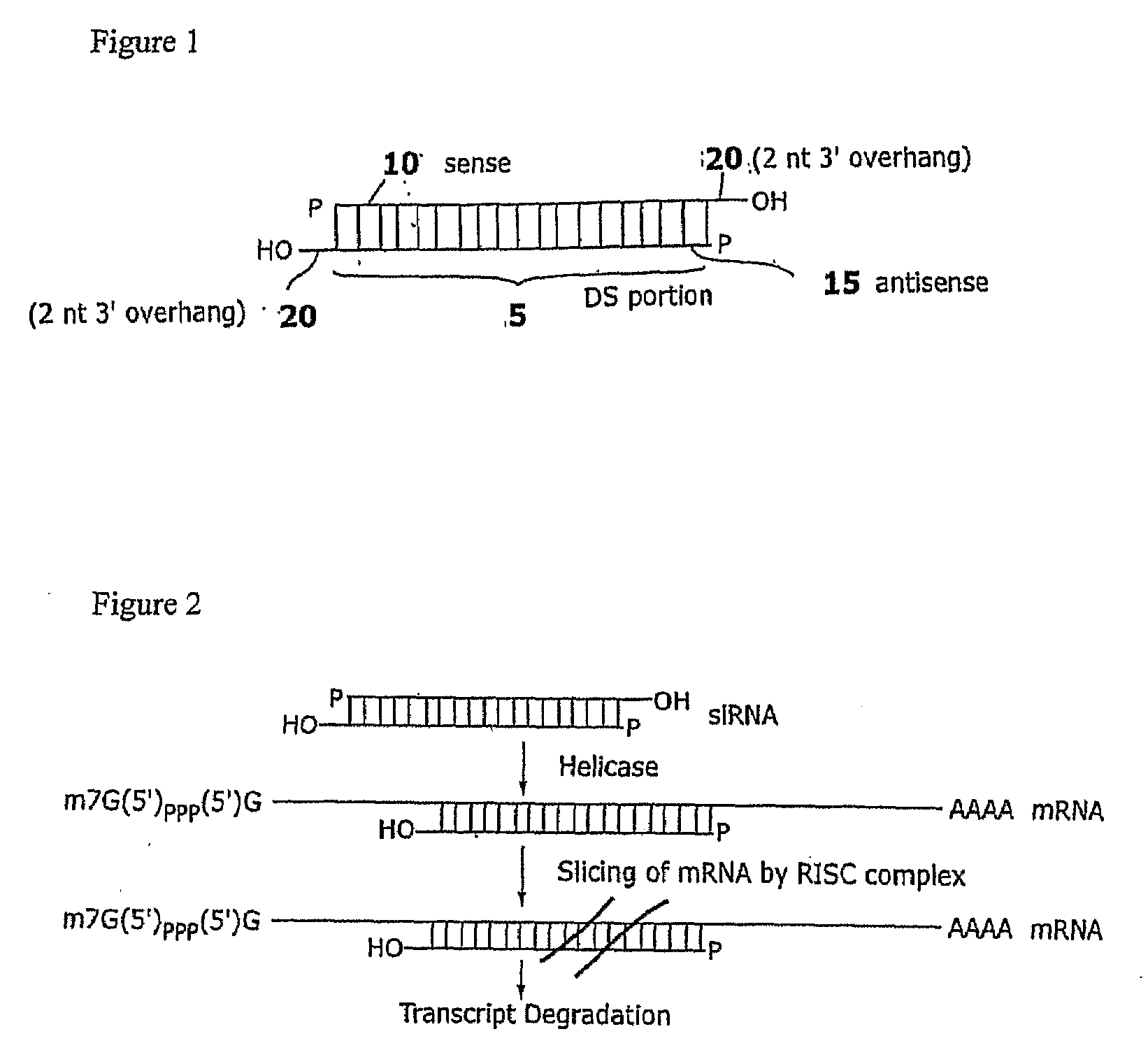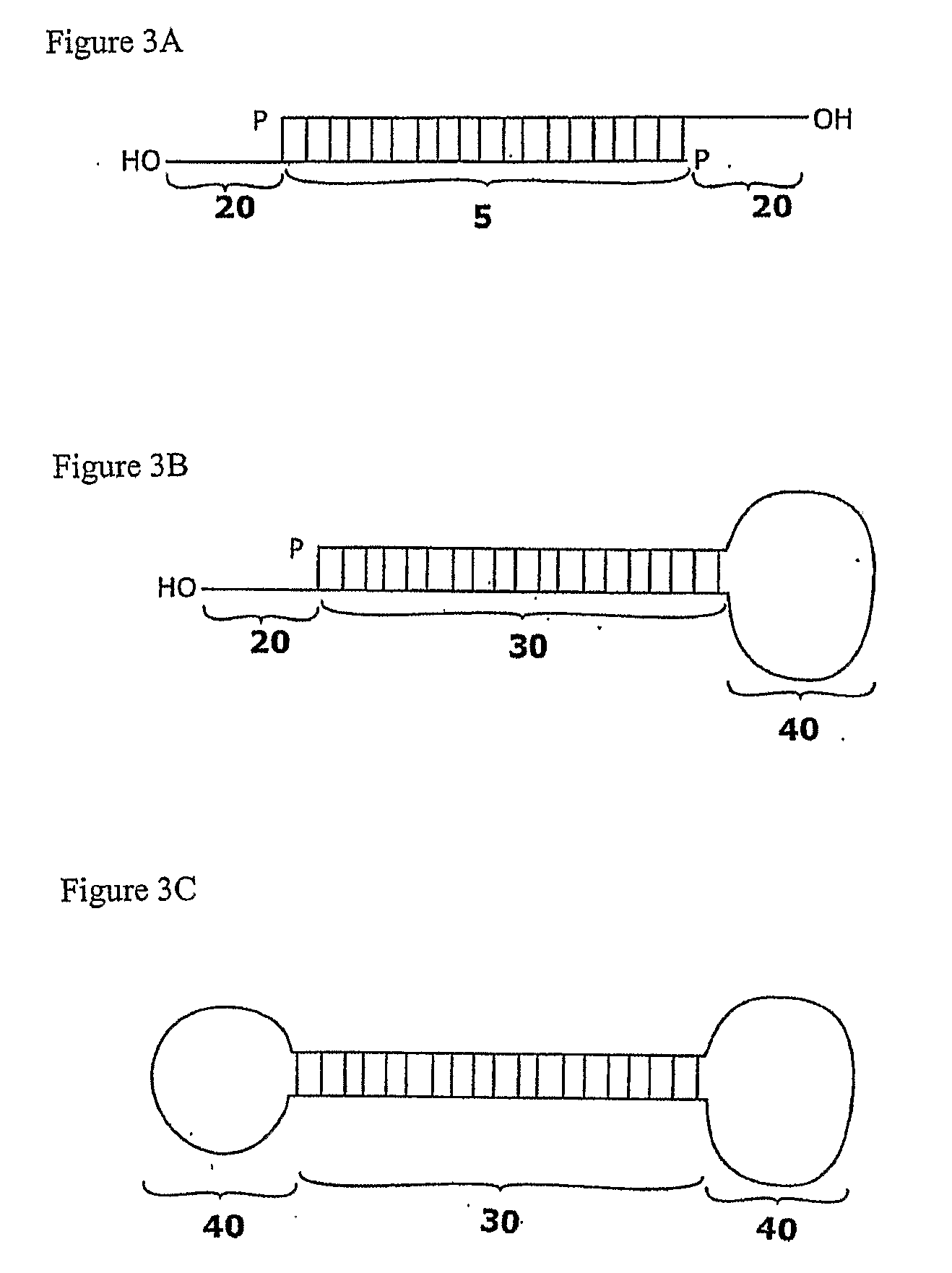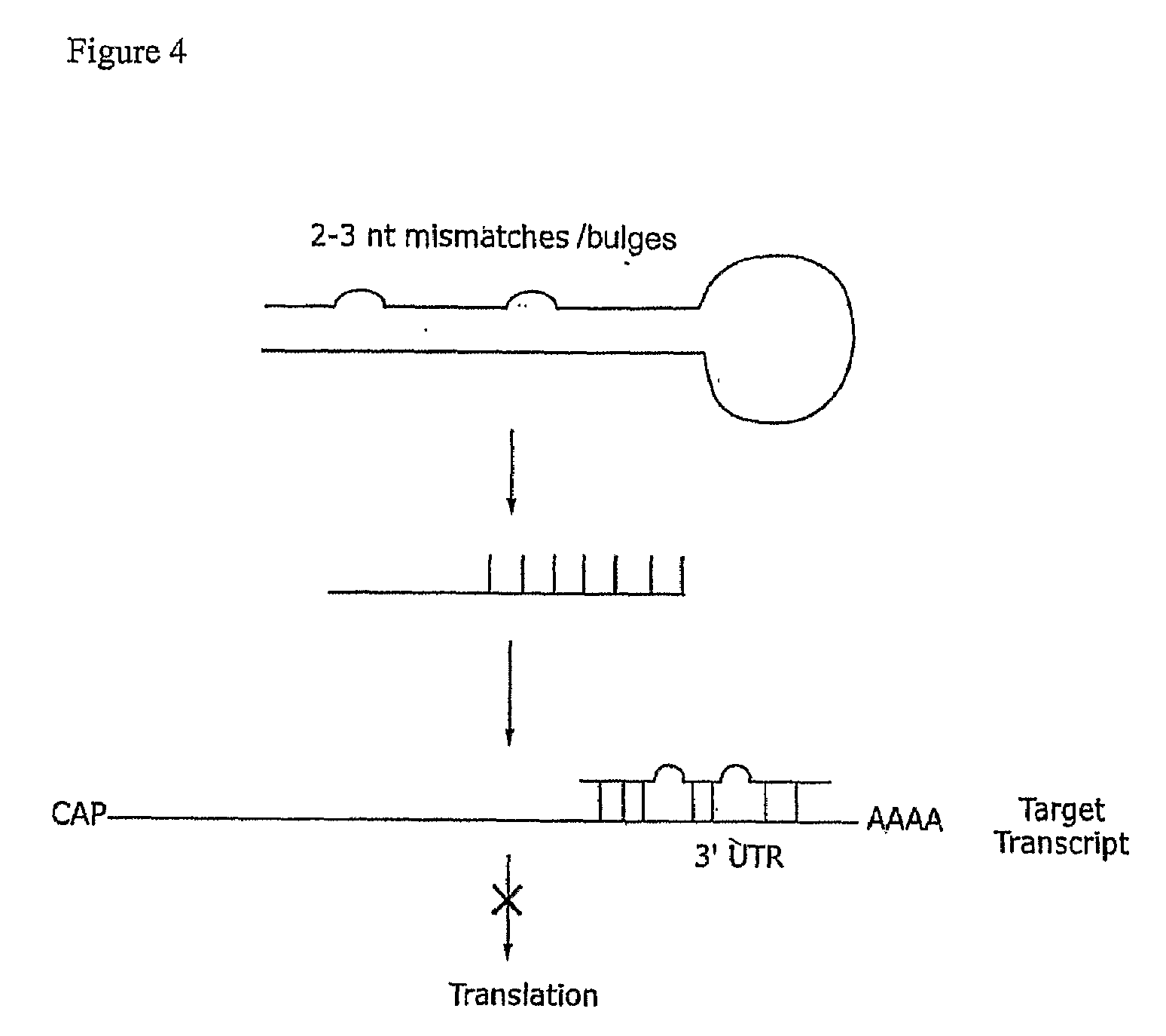Compositions and methods for RNA interference with sialidase expression and uses thereof
a technology of sialidase and interference, applied in the field of compositions and methods for rna interference with sialidase expression, can solve the problems of affecting the bioactivity of glycoprotein products, exhibiting undesirable heterogeneity, and lack of terminal sialic acid, so as to reduce sialidase activity, inhibit sialidase expression, and reduce sialidase activity
- Summary
- Abstract
- Description
- Claims
- Application Information
AI Technical Summary
Benefits of technology
Problems solved by technology
Method used
Image
Examples
example 1
Design of siRNAs to Inhibit Sialidase
[0153]Cytosolic sialidase cDNA in CHO cells (FIG. 8; SEQ ID NO: 33) consists of 1366 nucleotides and therefore contains 1348 possible potential 19 nucleotide targets for RNAi, i.e., 1348 antisense strands containing a 19 nt inhibitory region perfectly complementary to the sialidase mRNA transcript could potentially interfere with sialidase expression.
[0154]Five siRNAs targeted to different regions of the sialidase cDNA were designed based on empirical rules (Elbashir et al, 2001c, 2002). The siRNAs were designed to contain 21-nt sense and 21-nt antisense strands paired in a manner to have 2-nt 3′ overhangs on each strand. Target regions at least 50-100 nt downstream of start codon were selected. 5′ or 3′ untranslated (UTR) regions were avoided. Based on the cDNA sequence, 23-nt sequence motifs of the form 5′-AA(N19)TT-3′ or 5′-NN(N19)TT-3′, where N is any nucleotide were identified. Regions selected for siRNA design had a 30%-70% G / C ratio. In th...
example 2
siRNAs Targeted to Sialidase Reduce Sialidase mRNA Expression
[0158]Materials and Methods
[0159]CHO Cell Culture
[0160]Recombinant human IFN-γ was produced by a CHO cell line (originally provided by Dr. Walter Fiers, University of Ghent, Belgium) cotransfected with genes for dihydrofolate reductase (DHFR) Cells were cultured in Dulbecco's minimum essential medium (DMEM) and selected for growth in the presence of 2.5×10−7 M methotrexate (Sigma, St Louis, Mo.), 20 units ml−1 penicillin-20 □g ml−1 streptomycin mix (Invitrogen) and 10% Heat-Inactivated fetal bovine serum (Invitrogen). Attached cell lines were grown in 6-well-plates, T-75 flasks, and T-150 flasks by inoculating about 1×105 / mL cells. Transformation from attached cell lines to suspension cell lines was done by switching the medium from DMEM to HYQPF-CHO (HyClone) supplemented with 4 mM Glutamine and 0.1% Pluronic (Invitrogen). Serum content was gradually reduced from 10% to 0%. Cell density and viability were determined with ...
example 3
siRNAs Targeted to Sialidase Reduce Sialidase Activity
[0169]Materials and Methods
[0170]CHO cell culture and siRNA transfection were performed as described in Example 2.
[0171]Determination of Sialidase Activity
[0172]Confluent CHO cells were trypsinized using 0.05% Trypsin / EDTA solution and washed three times with PBS. 1×106 cells were resuspended in cold water for osmotic lysis and were passed through 26G3 / 8 needles at least twenty times. 4 mM 2′-(4-methylumbelliferyl)-α-D-N-acetylneuraminic acid (4MU-NeuAc) (Sigma) diluted in potassium phosphate buffer was added to the lysate to a total volume of 100 □L. At the same time, several dilutions of sialidase (Roche) with known activities were reacted with 4MU-NeuAc as standards. The samples were incubated for 90 minutes at 37° C. after which 900 □L of 0.2M glycine buffer pH 10.4 was added to stop the enzymatic reaction. 250 □L of the final solution was transferred to 96-well black plates and fluorescence was measured using a plate reader ...
PUM
| Property | Measurement | Unit |
|---|---|---|
| Fraction | aaaaa | aaaaa |
| Fraction | aaaaa | aaaaa |
| Molecular strain energy | aaaaa | aaaaa |
Abstract
Description
Claims
Application Information
 Login to View More
Login to View More - R&D
- Intellectual Property
- Life Sciences
- Materials
- Tech Scout
- Unparalleled Data Quality
- Higher Quality Content
- 60% Fewer Hallucinations
Browse by: Latest US Patents, China's latest patents, Technical Efficacy Thesaurus, Application Domain, Technology Topic, Popular Technical Reports.
© 2025 PatSnap. All rights reserved.Legal|Privacy policy|Modern Slavery Act Transparency Statement|Sitemap|About US| Contact US: help@patsnap.com



